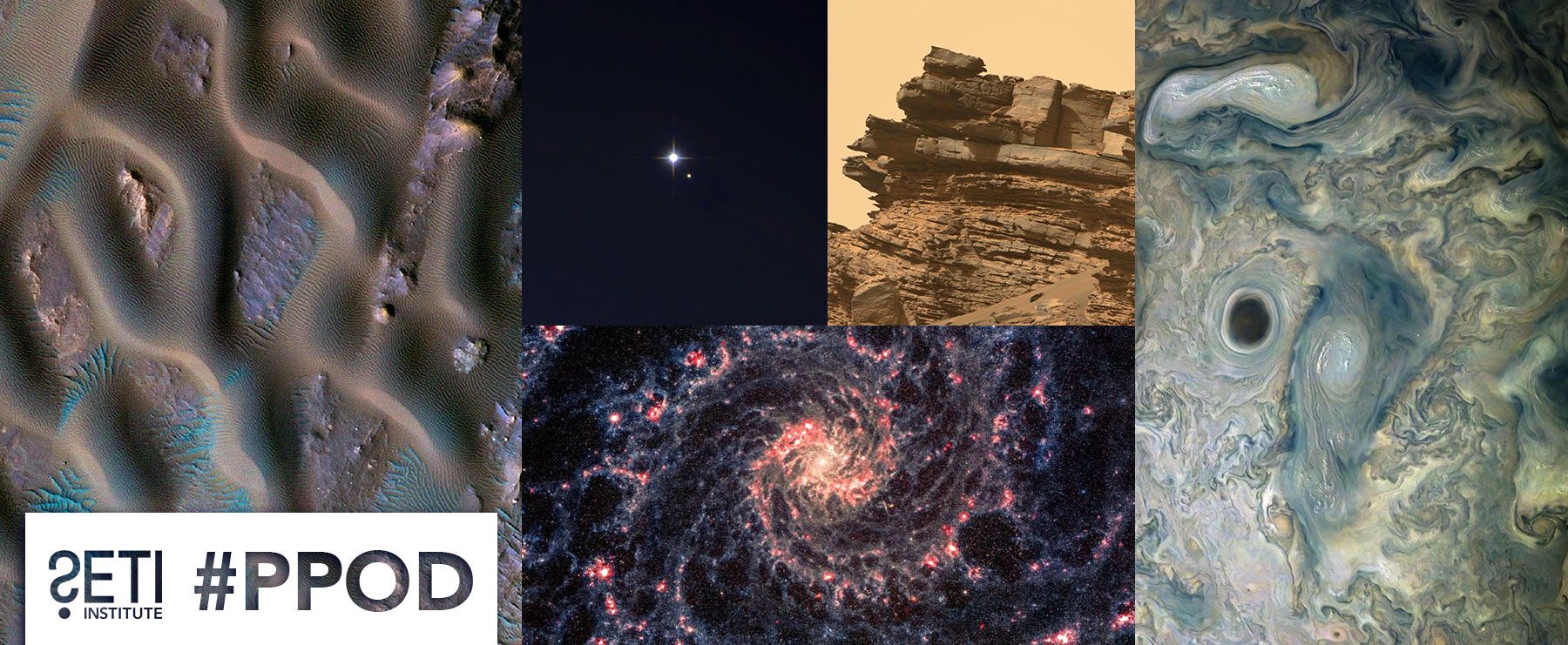
Planetary Picture of the Day
Week of July 25, 2022
Stunning images from around our solar system and beyond!
Monday, July 25, 2022
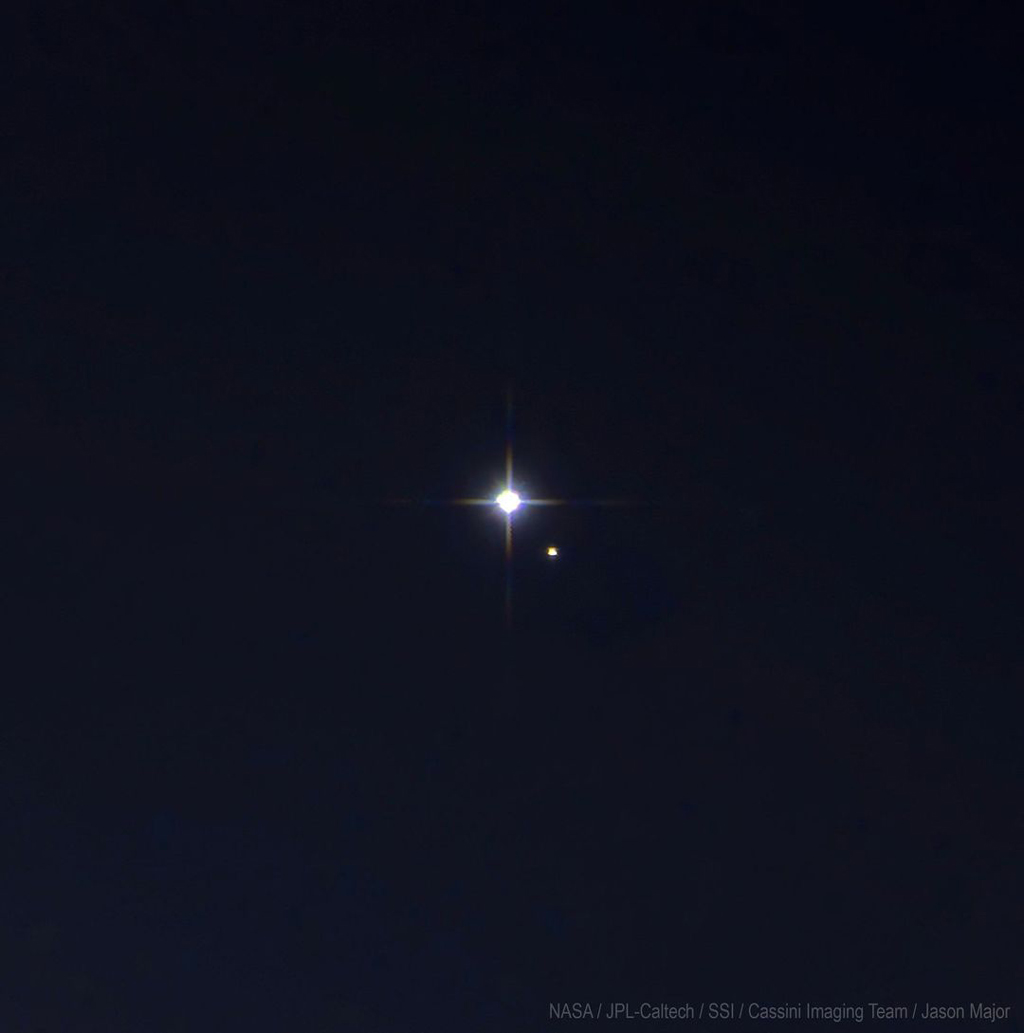
Credits: NASA / JPL-Caltech / SSI / J. Major
From A Distance...
On July 19, 2013, the Cassini Imaging Team captured views of Earth and the Moon from 900 million miles away at Saturn orbit. Here's a color-composite from three of those images acquired with red, green, and blue spectral filters.
Tuesday, July 26, 2022
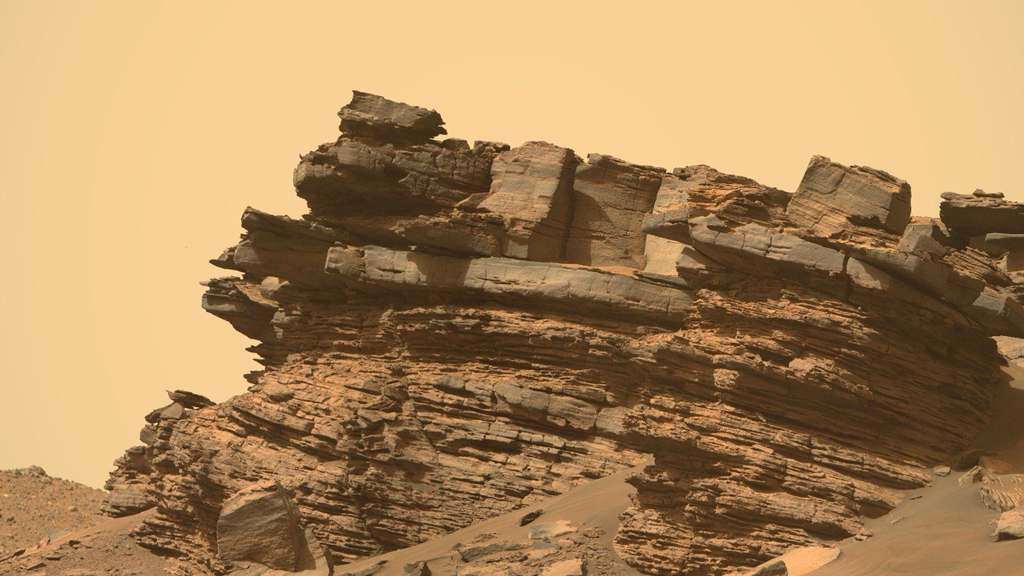
Credit: NASA/JPL-Caltech
Stacks of Rocks
Welcome to the river delta in Mars's Jezero crater. Look at these sedimentary stacks! We can explore a planetary history of climate changes, habitability, and maybe life right there for us to decode. Image acquired by NASA's Perseverance rover on July 24, 2022 using its Left Mastcam-Z camera.
Wednesday, July 27, 2022
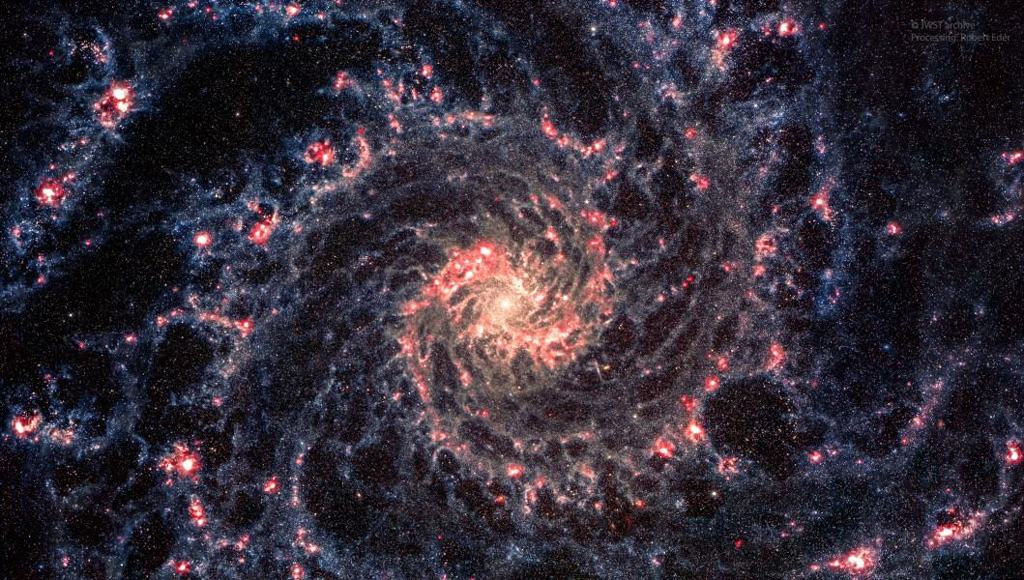
Credit: NASA, ESA, CSA, STScI
Processing: Robert Eder
Spiral Galaxy M74: A Sharper View
Beautiful spiral galaxy Messier 74 (also known as NGC 628) lies some 32 million light-years away toward the constellation Pisces. An island universe of about 100 billion stars with two prominent spiral arms, M74 has long been admired by astronomers as a perfect example of a grand-design spiral galaxy.
M74's central region is brought into a stunning, sharp focus in this recently processed image using publicly available data from the JWST. The colorized combination of image data sets is from two of JWST's instruments NIRcam and MIRI, operating at near- and mid-infrared wavelengths. It reveals cooler stars and dusty structures in the grand-design spiral galaxy only hinted at in previous space-based views.
Thursday, July 28, 2022
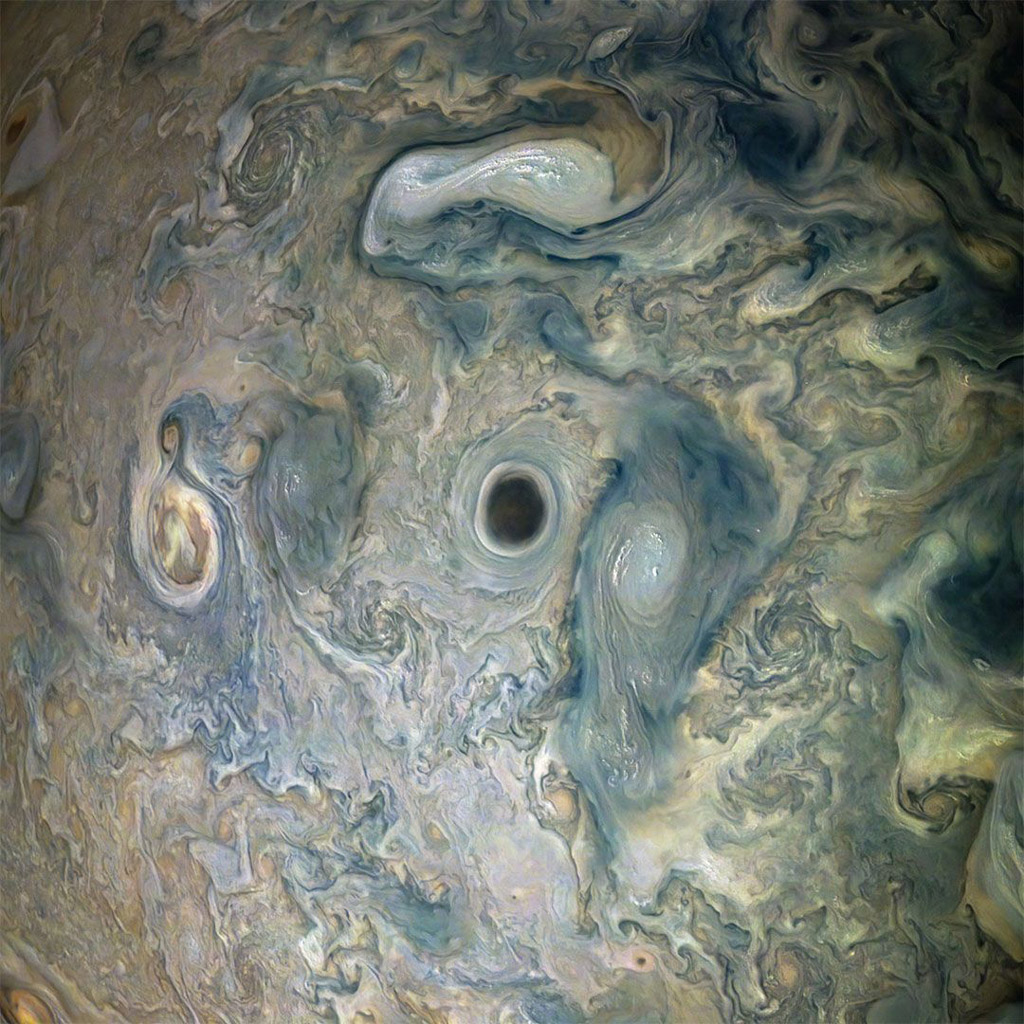
Credit: NASA/JPL-Caltech/SwRI/MSSS
Processing: Gerald Eichstädt and Sean Doran
Jupiter Abyss
NASA’s Juno spacecraft captured this view of an area within a Jovian jet stream showing a vortex that has an intensely dark center. Nearby, other features display bright, high altitude clouds that have puffed up into the sunlight. Citizen scientists Gerald Eichstädt and Seán Doran created and named this image using data from the spacecraft's JunoCam imager.
Friday, July 29, 2022
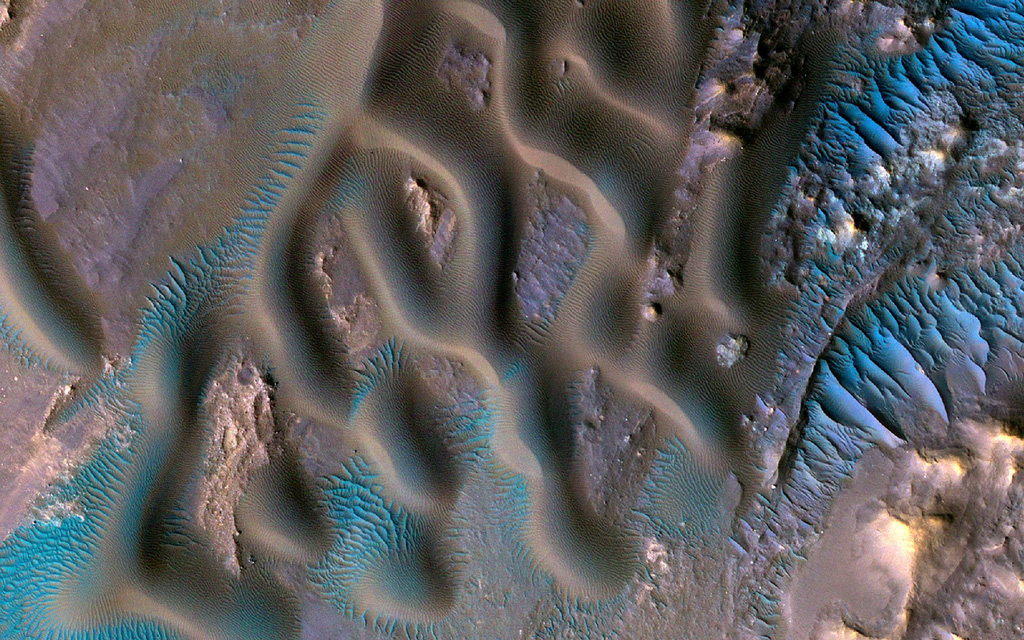
Credit: NASA/JPL-Caltech/University of Arizona
Blue Ripples on a Red Planet
Though Mars is the Red Planet, false-color images can help us learn about its weather and geology. This image shows a variety of wind-related features on the Red Planet near the center of Gamboa Crater. Larger sand dunes form sinuous crests and individual domes. The area shown is about 800 meters across.





